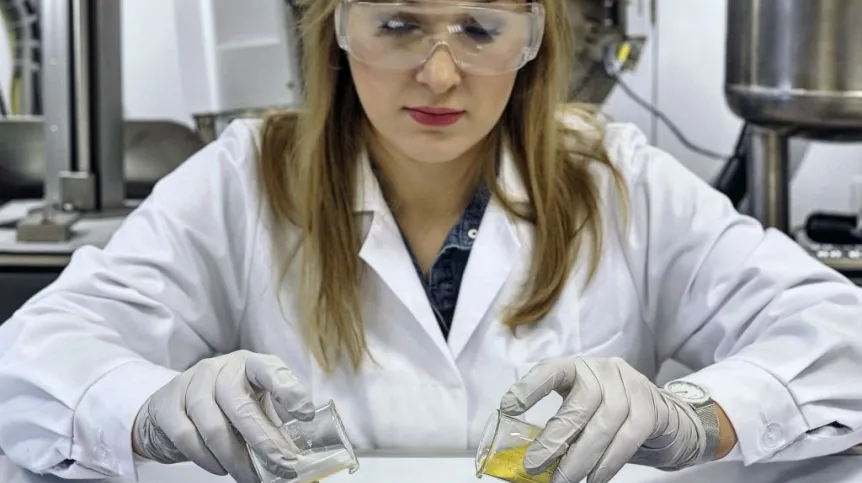
Perovskites, substances perfectly absorbing light, are the future of solar energy. Chemists from Warsaw show that to obtain perovskites, solutions or high temperatures are not necessary, only common... grinding.
Grinding chemicals is usually associated with old pharmacies and their inherent attributes: mortar and pestle. It\'s time to change these archaic connotations! Scientific discoveries in recent years have shown that effective chemical transformations occur in solids as a result of mechanical force.
Mechanochemical reactions for years have been the subject of research of Prof. Janusz Lewiński’s teams from the Institute of Physical Chemistry of the Polish Academy of Sciences and the Faculty of Chemistry of Warsaw University of Technology. In their latest publication, Warsaw scientists reveal a surprisingly simple and effective method of producing perovskites - the future of photovoltaic materials with spatially complex crystal structures. The Institute reported on the research in the release sent to PAP.
"Mechanochemistry allows to synthesize a variety of functional hybrid inorganic-organic materials, potentially of great importance for the energy sector. Our youngest >>children<< are high quality perovskites. These compounds can be used to produce thin light-sensitive layers of high efficiency solar cells" - said Prof. Lewiński.
Perovskites are a large group of materials with definite spatial crystal structures. Perovskite built of calcium titanate CaTiO3 occurs naturally as a mineral. Calcium atoms are arranged in the corners of a cube, in the middle of each wall is an oxygen atom, and the centre of the cube a titanium atom. In other perowskites various organic and inorganic compounds can be used to build the same crystalline structure, which allows to substitute titanium, for example, with lead, tin or germanium.
As a result, the properties of the perovskite can be adjusted so as to best fit the specific application, for example, in photovoltaics or catalysis, but also in the construction of superconducting electromagnets, high voltage transformers, magnetic refrigerators, magnetic field sensors and RAM.
At first glance, perovskite production method using mechanical force developed at the Institute of Physical Chemistry PAS, looks a bit like magic.
"We pour two powders into a ball mill: white, methanaminium iodide CH3NH3I, and yellow, lead iodide PbI2. After several minutes of grinding, the substrates are gone without a trace. The mill only contains a homogeneous black powder: perovskite CH3NH3PbI3" - explained PhD student Anna Maria Ciećlak (Institute of Physical Chemistry PAS).
"Dozens of hours of waiting for the reaction product? Solvents? High temperatures? In our method, all this turns out to be unnecessary! We produce chemical compounds using reactions that occur only in solids at room temperature" - said Dr. Daniel Prochowicz (Institute of Physical Chemistry PAS).
Mechanochemically produced perovskites were transferred to the team of Prof. Michael Graetzel from the Ecole Polytechnique de Lausanne in Switzerland, where they were used to build a laboratory solar cell. Performance of the cell containing perovskite with mechanochemical provenance proved to be more than 10 percent higher than performance of a cell with the same site, but containing analogous perovskite obtained using the traditional method, involving solvents.
"Mechanochemical perovskite synthesis method is the most environmentally friendly method of producing this class of materials. It is simple, efficient and fast, ideal for industrial applications. With full responsibility we can state: perovskites are materials of the future, and mechanochemistry is the future of perovskites" - concluded Prof. Lewiński.
The results of Prof. Lewiński’s group significantly contributed to establishing a permanent international cooperation between European research centres and companies, currently developed in the project GOTSolar funded under the Horizon 2020 programme.
Research on mechanochemical methods for the production of materials with three-dimensional structures were funded by grants TEAM and CHAMPION of the Foundation for Polish Science. (PAP)
lt/ agt/
tr. RL













